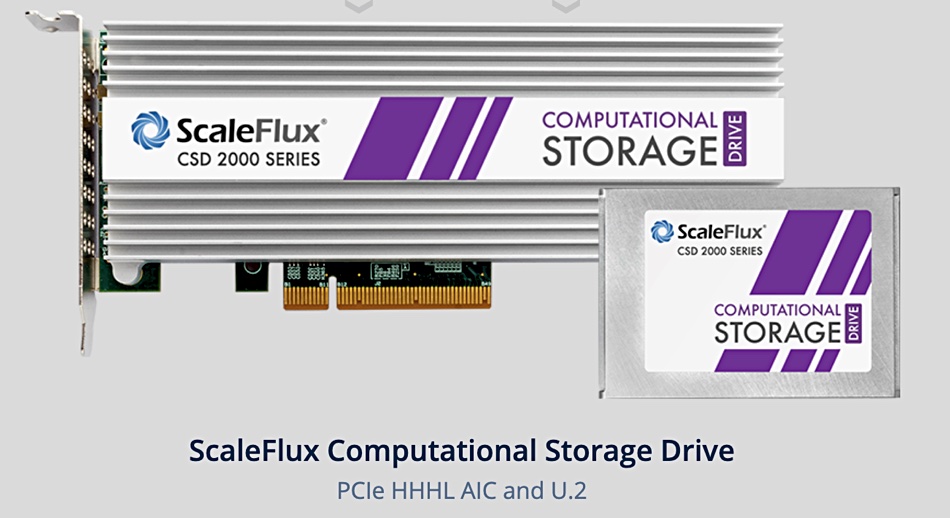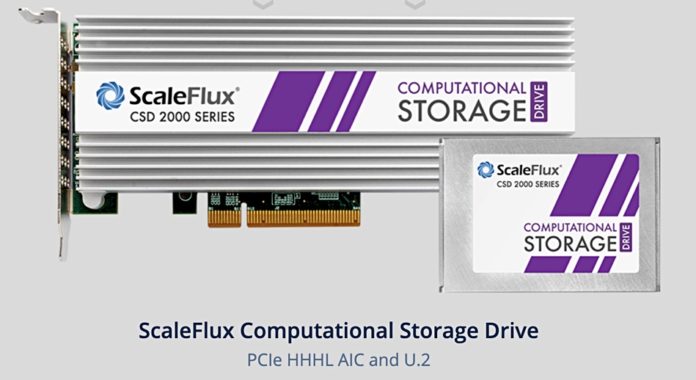ScaleFlux has announced a CSD 2000 computational storage drive using Micron quad level cell (QLC) flash with integrated compression. It claims it can achieve costs under $0.01/GB/year over a 5-year period.
It says QLC flash has an average 15-20 per cent lower price than the triple-level cell (TLC) equivalent but worse performance and endurance. ScaleFlux claims its computational storage approach eliminates the performance and endurance disadvantages of QLC and yet still approaches hard disk drive levels of cost per gigabyte.
Hao Zhong, ScaleFlux co-founder and CEO, said: “We are solving the performance and endurance challenges that ordinary QLC drives encounter while expanding the cost savings. It’s a win-win for customers.”

The ScaleFlux QLC CSD 2000 product has performance seemingly on par with more expensive TLC drives, and up to 6x faster than ordinary NVMe QLC SSDs. Its endurance is also at TLC drive levels and up to 4x more than other QLC SSDs. ScaleFlux says it has dozens of customers whose testing shows 3:1 or better compression ratios for their data.
ScaleFlux chief scientist and co-founder Tong Zhang says QLC NAND has ~1,000 cycling endurance, in contrast to the ~5,000 cycling endurance of its TLC counterpart. This generally translates into only less than 0.14 DWPD (drive write per day) over 5 years – not a lot. He also says the TLC-to-QLC SSD transition will cause noticeable SSD random IOPS performance degradation. The arrival of the PCIe Gen4 I/O interface will make the random IOPS difference between TLC SSDs and QLC SSDs even larger.
By using built-in and transparent compression, with the same 1,000 cycling endurance of QLC flash, the CSD 2000 drive, with 8TB of raw capacity, could sustain 0.46 DWPD over five years while offering 16TB capacity. Zhang says transparent compression not only reduces the storage cost by 2x (i.e., 16TB usable storage capacity with only 8TB physical flash memory), but also improves the DWPD by over 3x (i.e., from 0.14 to 0.46).
It also effectively amplifies the backend flash memory access bandwidth and improves the random IOPS so that the QLC CSD 2000 can achieve a random IOPS number much closer to that of normal TLC SSDs.
Micron N28A QLC NAND is available as part of ScaleFlux’s CSD portfolio today.








